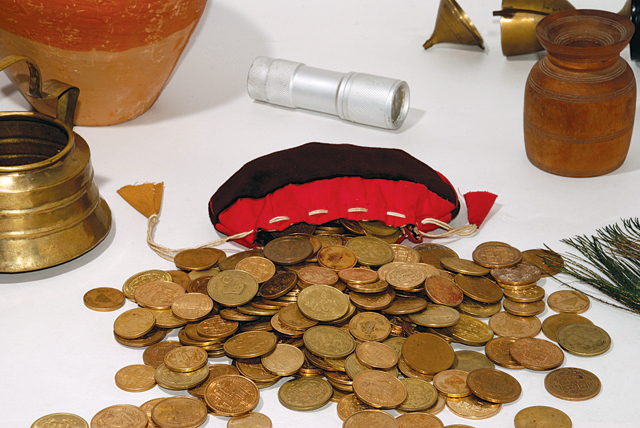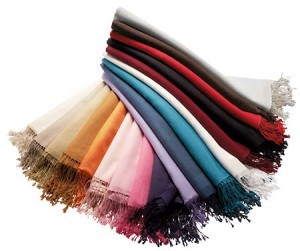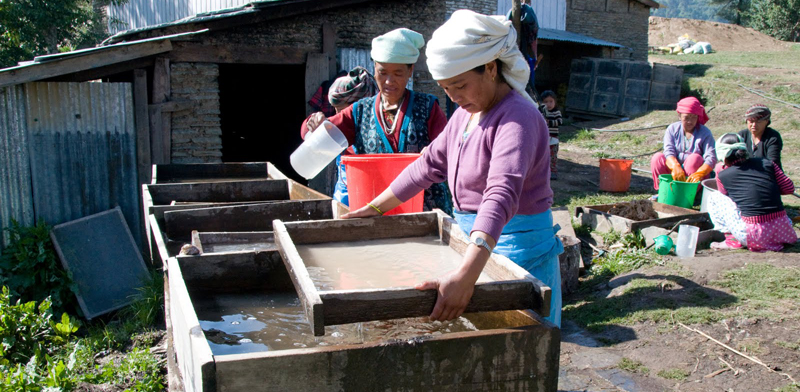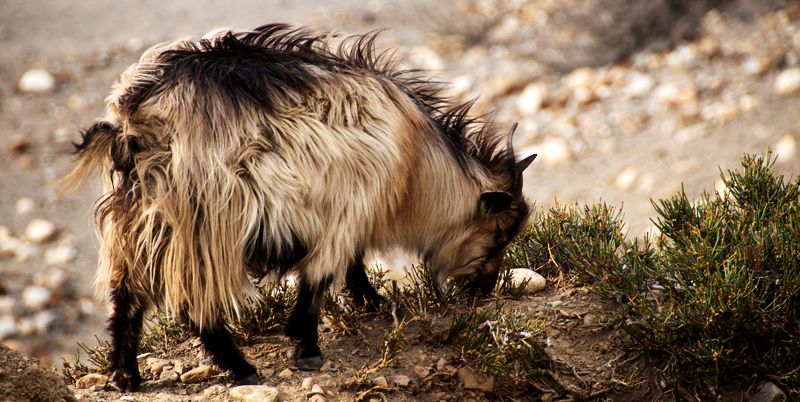The Mhicha, translated literally to “pocket” in Newari, can hold up anything you would want to carry in a handful.
How to buy a Pashmina?
I collect pashminas, other Eastern (and some African) shawls. So, I thought I would write a post that shared by passion for these luxury items and perhaps, give you some insight into buying them.
Pashminas were made popular by the fact that famous Parisian fashion designers started showing them in their collections in the late 1990’s. However, pashminas (and other eastern shawls) have been a part of traditional wear for centuries. They were worn by the ancient kings and queens of India and surrounding countries and are well-documented in the history of these nations. I discovered pashminas by accident. South Africa has hot days and cold nights – and I hated carrying around a jacket, hat, etc. to compensate for changes in temperature. I took one of my mum’s shawls (which she’d bought on a trip to India 29 years before) folded it and shoved it in my handbag and I was hooked. It was the perfect garment – beautiful, soft, easy-to-wear, just warm enough, covered my head in wind or rain and fitted into a handbag. And everyone remembered them. My collection now stands at 165 shawls. Continue reading
Thangka: Nepali Traditional Painting
History of Nepalese Paintings
Paintings from Nepal were primarily found in illustrations of Holy Scriptures from the eleventh century AD. They were painted on different materials such as leaves, wood, and the wooden covers of the scriptures. It is said that the first paintings to enter the country were those inspired from these Holy Scriptures and painted by artists in India during early eleventh century. In comparison, Buddhist manuscripts were more elaborately decorated than the Hindu manuscripts. Most of these early scriptures were written on palm leaves, a plant that is found on the plains and coastal region of the Indian subcontinent, further indicating the possibility that later paintings in Nepal were inspired by those of what is now India. The paintings found in the manuscript may be used to describe the theme or for the sole purpose of decoration. They usually depict shrines, temples, animals, and deities and their surroundings. These old paintings found in both Buddhist and Brahman manuscripts do not hold a wide variety of colors or shades as traditional dyes were used derived from raw materials. Some dyes were more commonly used in some areas as the raw materials were more easily found. The early scroll paintings of Nepal existed in different forms as patas, torananas, paubhas, and thangkas. They were mostly held in private possession and were only displayed to the public during festivals. The unique thing about most of these Nepalese paintings is that the date, title, the owner, and sometimes the artist of the painting would also be mentioned.
Milarepa
On a recent trip to Tibet we stopped at the renowned cave where Milarepa meditated. Once you cross the Nepal-China friendship bridge at Kodari, and are on the highway to Lhasa, one comes across a small river valley with lush green agriculture at the bottom, with rows of greenhouses. Amidst a series of monasteries and a small village, lies the cave where the beloved singing saint and mystic Milarepa meditated. Historians tell us that Milarepa lived from AD 1052-1135 and is admired for his songs which remain popular in Tibet. It is said that Milarepa was a charismatic and eccentric figure and hence his life, various events, places he visited, teachings and travels are captured and recreated by artists in numerous scrolls, paintings and metal craft. A walk through Patan, Bauddha Stupa area or the lanes in Thamel reveals many artists who have mastered them and continue to recreate them for those who revere Milarepa.
Lokta: Pride of Paper
Attractive, long-lasting and versatile, Nepal's Lokta paper is widely used and highly sought after both in the country and abroad. From official government documents to lamp shades, Lokta is a paper for all seasons.
Recently, while on a visit to a government office in Kathmandu, I'd happened to comment on the dreary stacks of paperwork that make up such an integral part of the operations in such places. I'd wondered how these files and documents survived all that rough handling and neglect. It was a friend who'd made me wise to the fact that government offices here use a specific type of paper, popular especially for its durability. I didn't know it at the time, but what she was referring to was 'Lokta' paper.
Pashmina: Coming home shorn
Despite facing stiff competition from far inferior (and cheaper) reproductions, Nepali pashmina has stood the test of time and persevered. Now, after being rebranded as Chyangra Pashmina, it is up to the industry to innovate and maintain its fabled quality.
The image of a lone mountain goat, high in the Himalayas, is perhaps the farthest one can get from luxury. But it's from the soft inner coat of the chyangra, as the goat is locally called, that we acquire the highly coveted and deluxe pashmina fibre. This very fine wool, measuring around 13 to 17 microns in diameter, is collected from the fleece of these animals that live more than 3000 meters above sea level. The outer coat is discarded and only the finest inner material, also known as the 'Diamond fibre', is used. This is what makes Nepali pashmina an internationally renowned and coveted luxury item.



